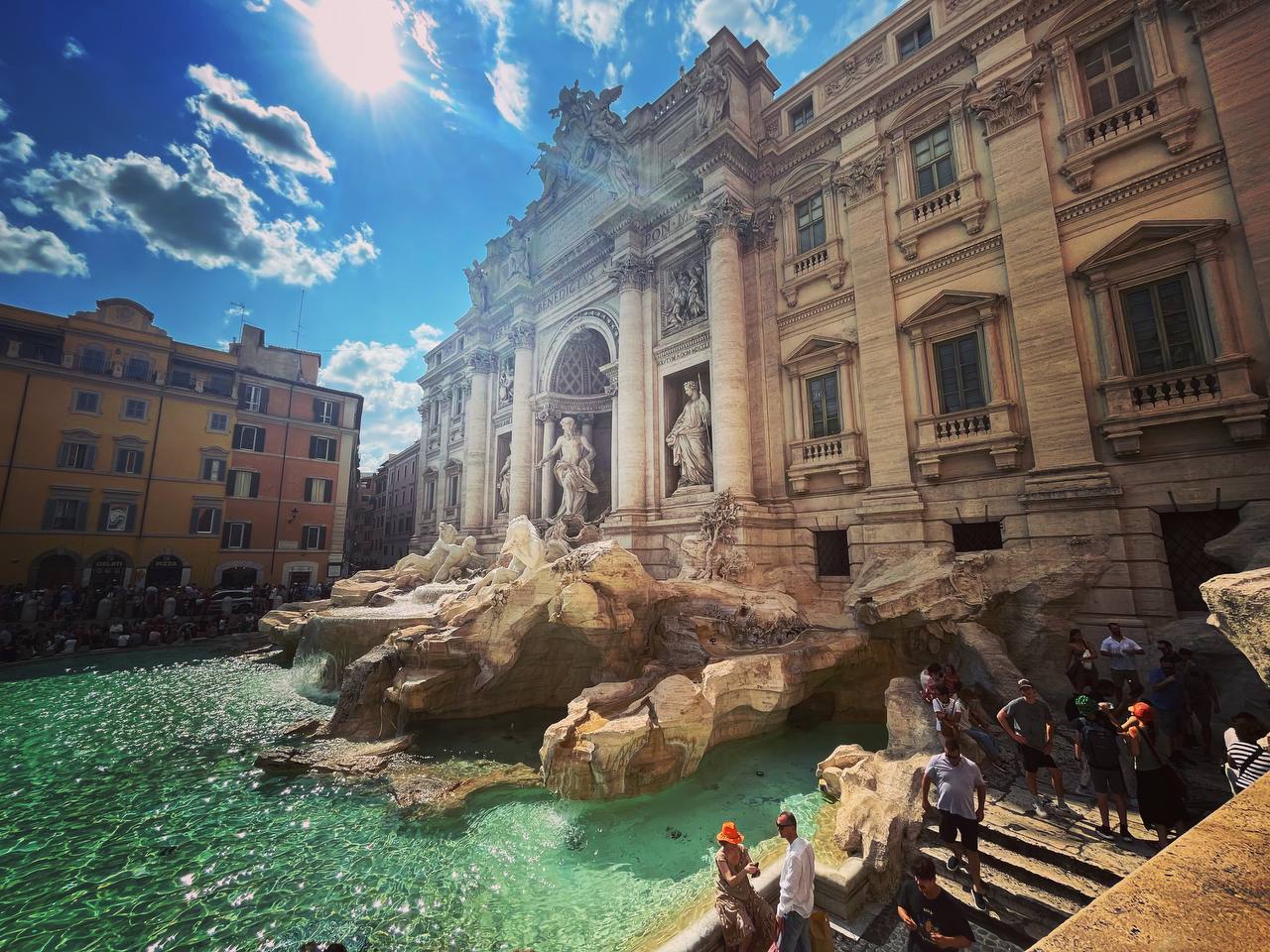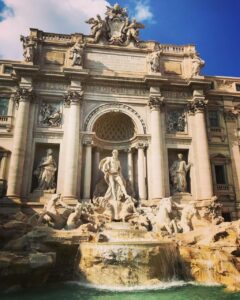
Italian philosophy of life in contrasts (p. 10): Fontana di Trevi – wish fulfiller (1)
The majestic Fontana di Trevi is a true architectural gem of Rome. This enormous, elegant, and realistic marble monument is located at the intersection of streets where one would not expect to find it.
The fountain was built in Rome in the 18th century, but its origins date back much earlier. In the 20s BCE, Emperor Octavianus Augustus and his associate Marcus Vipsanius Agrippa decided to reorganize the city as Rome began to expand significantly. The first task was to find a source of drinking water. The emperor sent a legionnaire detachment on a search, which proved unsuccessful. On their way back to Rome, the legionnaires encountered a girl who helped them find the path to the water source. Thanks to this encounter, an aqueduct was built in the city, fed from this source. The name was chosen in honor of the girl – Aqua Virgo, which translates as the “Virgin Waters.”

In 1629, Pope Urban VIII decided that the fountain was not imposing enough. In 1640, the Pope commissioned architect Giovanni Lorenzo Bernini to draw a plan and design a more impressive square and fountain. Bernini sketched designs, but after the death of Pope Urban VIII, construction and all work came to a halt. Only in 1700 did Bernini’s disciple, Carlo Fontana, take up the task. He used his teacher’s sketches, preserving baroque ideas but with a more restrained classical style. The architect placed a powerful sculpture of the water deity Neptune and his companions at the center of the fountain.
Fontana died in 1714, and construction again stalled. Pope Clement XII, after holding a competition and selecting an architect, entrusted Nicola Salvi to complete the work, building something grand and truly impressive. The construction of the fountain took a whopping 30 years, from 1732 to 1762. Salvi managed to convey movement, incredible realism, plasticity, and at the same time, lightness in stone.
The modern fountain presents itself as part of the ocean, mighty, swift, uncontrollable, from which a powerful chariot emerges gracefully in the form of a seashell with the ruler of water and sea horses and tritons harnessed. To the right of Neptune is the goddess of abundance, to the left, a figure symbolizing health and well-being. The scene captivates and mesmerizes amid the sound of water “beating against rocks and reefs.”
Let’s go “from tourism to lifestyle.”









